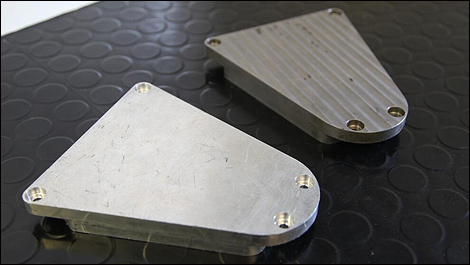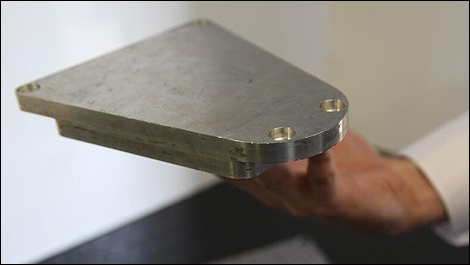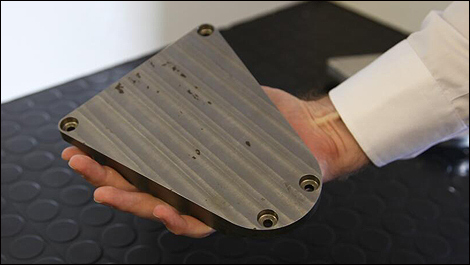Dec
25th
Stay connected Subscribe to our RSS feed
Formula 1 cars are weighed during the Grand Prix weekend to ensure they comply with the minimum weight requirement of 640 kg. Teams use ballast to ensure the cars run at the minimum weight.
Ballast was once made of iron or lead. Nowadays, a much more advanced material is utilized: a tungsten alloy trademarked, Densamet.
Densamet is very good candidate for the manufacture of various balance and ballast components to allow engineers the opportunity to optimise vehicle handling. Ballast is normally located underneath the floor of the car as close to the ground as possible to maintain a very low Cg (centre of gravity).
Caterham F1 Team recently released photos of some of the ballast located inside their CT03-Renaults.
Here are two examples of ballast, the same size and volume. One is made of aluminium, while the other is made of Densamet.
The aluminium ballast weighs around 800 g (1.8 lbs) -- easily light enough to lift with a few fingers.
The Densamet tungsten alloy ballast weighs 9 kg (19.8 lbs). One needs the whole palm of his hand to hold it!
Ballast was once made of iron or lead. Nowadays, a much more advanced material is utilized: a tungsten alloy trademarked, Densamet.
Densamet is very good candidate for the manufacture of various balance and ballast components to allow engineers the opportunity to optimise vehicle handling. Ballast is normally located underneath the floor of the car as close to the ground as possible to maintain a very low Cg (centre of gravity).
Caterham F1 Team recently released photos of some of the ballast located inside their CT03-Renaults.
 |
| (Photo: Caterham F1 Team Twitter) |
Here are two examples of ballast, the same size and volume. One is made of aluminium, while the other is made of Densamet.
 |
| Aluminium (Photo: Caterham F1 Team Twitter) |
The aluminium ballast weighs around 800 g (1.8 lbs) -- easily light enough to lift with a few fingers.
 |
| Denasmet (Photo: Caterham F1 Team Twitter) |
The Densamet tungsten alloy ballast weighs 9 kg (19.8 lbs). One needs the whole palm of his hand to hold it!
 The latest auto news, reviews, prices, product and vehicle releases.
The latest auto news, reviews, prices, product and vehicle releases.